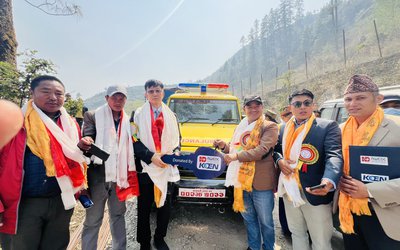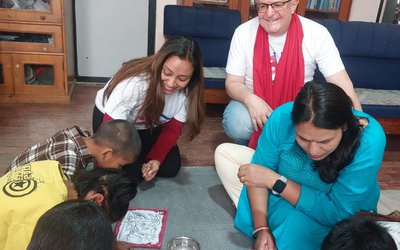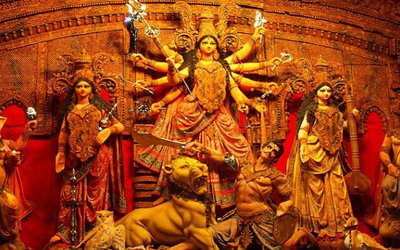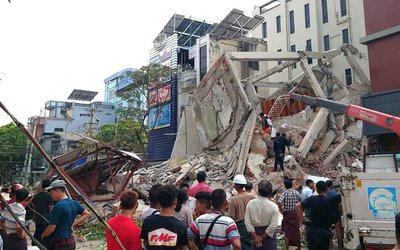Uzbekistan sojourn was as fascinating as the remarkable passage through Turkey, including Istanbul and Kusadasi, preceding it. For many centuries, the Silk Road was the world’s superhighway and Uzbekistan was at its heart with the cities of Samarkand, Bukhara and Tashkent being important part of this network of trade. Formally established during the Han Dynasty of China that linked many regions of the ancient world in commerce between 130 BC-1453 CE, the Silk Road derives its name from the lucrative Chinese silk trade which paved the way to development of an extensive transcontinental trade network.
Samarkand
Turkish Airline flight from Istanbul to Samarkand, a historic city in north-eastern Uzbekistan’s Zarefshan River valley with many cultural sites and once important place in the ancient Silk Road, was the start of the journey. Registan, flanked by three colorful madrasahs (Ulugh Beg, Tilya-Kori and Sher-Dor) with distinctive Islamic architecture built in 1417-1636 was the most iconic landmark in the city. Over an hour long colorful light show in the evening plus the adjoining extended open spaces, gardens and restaurants make the square further lively and enjoyable to spend few hours. Interestingly, Registan (meaning Sandy place or desert in Persian), was only a public square during the time of early Timurid dynasty where people gathered for hearing royal proclamations and witness public executions.
A lovely ancient trading dome, Chorsu, situated right behind the Sher-Dor was interesting to visit. Two other interesting landmarks- Bibi Khanyam mosque and Shakhi Zinda Necropolis- were in the neighborhood too. Bibi-Khanym Mosque (built in 1399-1405) was one of the largest and most magnificent mosques in the Islamic world in 15th century. While the mosque had turned into a grandiose ruin later, a major part of it was restored during the Soviet period. The entrance, the minarets of main mosque and the huge Quran stand in the middle of the courtyard are among the key attractions to note. Just a kilometer away exists one of the mysterious architectural monuments of Samarkand, the Shakhi Zinda complex with eleven sparkling blue color tombs or mausoleums on a hillock. Also called the "Street cemetery", the mausoleums of royals and nobles stretch on both sides of a narrow street with their blue domes looking like an elegant necklace. The main mausoleum from which the necropolis starts is the imaginary grave of Prophet Muhammad's cousin, Kusam ibn Abbas, who allegedly preached Islam in Samarkanda for 13 years in 640 CE but was beheaded by Zoroastrians during his prayer. The water source at the grave is believed to possess healing power and his legendary name happens to be “Shakhi Zinda” or Living King.
Gur-e-Amir (meaning Tomb of the King), the Mausoleum of Amir Timur (best known as “Tamerlane” or “Timur- the Lame), who founded the vast Timurid Empire is another important and impressive site of interest in Samarkand. This architectural complex with its azure dome was built by Muhammad Sultan, Timur's heir apparent and beloved grandson, at the end of 14th century. The complex with lovely blue minarets, mosques and huge courtyard contains the tombs of Timur, his sons (Shah Rukh and Miran Shah), grandsons (Ulugh Beg and Muhammad Sultan) and his teacher, Sayyid Baraka. The Gur-e-Amir is considered a real landmark in the annals of Persian-Mongolian Architecture as it shaped later Mughal tombs, including Gardens of Babur in Kabul, Humayun's Tomb in Delhi and the Taj Mahal in Agra. After the end of 17th century Samarkand declined as the capital was transferred to Bukhara as the great Silk Road bypassed the city.
Bukhara
Lovely was to travel to Bukhara, a major Silk Road stop ever since the 6th century BC, on comfortable fast train. With over 2000 year old history of trade, scholarship, culture, and religion Bukhara has many landmarks listed by UNESCO as World Heritage Sites. Bukhara’s skyline is dominated by the Kalan Minaret, a 45 meter tall 12the century tower. It is known as the Tower of Death as people opposing the rulers were taken to the top of the tower and thrown away as a sentence in the earlier times. Colorful Kalan Mosque, with spectacular tile work and a huge courtyard that can accommodate 10000 people, is close by. Charming structures of Silk Road Bazaars, a network of interlinked domed market, embellish the old town, including Taki Sarrafon (money changers bazaar), Taki Telpak Furushon (cap makers bazaar) and Taki Zargaron (jewelers’ bazaar). A 500 years old Hammam or Turkish bath right in the middle of the market was fun to pop-in to enjoy traditional steam bath, scrubbing and massage after hours of walking and sightseeing. Caravanserais, shelters for Silk Road traders, and Lyabi-Hauz, a plaza built around a pool shaded by mulberry trees, were other attractions.
The Ark, a renovated sprawling 5th century fortress, now a famous museum at the heart of Bukhara, can be engrossing for at least a couple of hours. In the fortress, the 17th-century Juma or Friday Mosque, the former living quarters of the emir’s prime minister, the vast Reception and Coronation Court, treasury, mint and harem shed light on the overarching power of emirs, their culture and life style. Also, open air royal stables, noghorahona (a room for drums and musical instruments used during public spectacles) and Salamhona or Protocol Court and royal apartments are interesting to pass by. Bukhara’s long history from the Shaybanids to the tsars, a huge whip of mythical hero Rustam, padlock used to secure the Ark gates, a case used to make petitions to the emir and emir’s throne are all there to see.
Tashkent
Lovely was to travel to Tashkent from Bukhara on a modern fast train, almost 600 km in about 4hrs. Tashkent; capital of Uzbekistan rebuilt after 1966 earthquake by Soviets, is a blend of modern and Soviet-era architecture with wide roads and good parks. It is Uzbekistan’s business and political city with only few sites of tourist interest. Timur Museum and covered market or chorsu bazaar are among the prominent tourist sites. Chorsu is interesting to visit to see and buy wide variety of food, meat, dry fruits etc displayed in specialized sections. Timur Museum, opened in 1996, displays genealogy of the warlord, his military campaigns, diplomatic and trade relations and his dynasty relics- maps, weapons, coins, manuscripts, potteries, jewelry, models of architectural works etc. For visiting Indians and others interested in the ever troubled Indo-Pak relations there is a small Shastri memorial at the corner of a park. On 10 January 1966, then Indian Prime Minister Lal Bahadur Shastri and the Pakistan President Ayub Khan signed a pact in Tashkent with Soviet Premier Alexei Kosygin as the mediator after the Indo-Pak War of 1965. Next day, Shastri died suddenly and allegedly mysteriously. Thus, the small monument and a street named after Shastri in his memory constitutes to be of some tourist interest too.
Cuisines
Aside from visits to cultural sites, tasting varieties of Uzbek cuisine that shares the culinary traditions of Turkic peoples was interesting. Uzbek cuisines are "noodle-rich". Mutton is a popular meat due to the abundance of sheep in the country and constitutes a key ingredient of many Uzbek dishes. Palov or "pilaf", a main course is mainly made with rice, pieces of meat, grated carrots and onions. It is usually cooked in a kazan or deghi over an open fire. Chickpeas, raisins, barberries, or fruit are also added for variation. Fun was to walk for several kilometers towards the old town of Samarkand at the back of Registan in search of genuine Palov/ pilaf meal as it was prepared only in a few traditional restaurants that served genuine pilaf only between 11am-1pm. Shurpa/ shorva, a soup made of large pieces of fatty meat (usually mutton) and fresh vegetables is popular but was not of our liking being too fatty. Shaslik kebabs and Obi Non or fluffy bread, a staple of Uzbek cuisine, were really lovely.
In conclusion, the Uzbekistan trip that included visit of Samarkand, Bukhara and Tashkent was really fun and educational and was wrapped up with a smooth flight from Tashkent to New Delhi on Uzbekistan Airways. The final leg of return journey to beautiful home town Kathmandu after few days in New Delhi on a comfortable wide bodied Nepal Airlines aircraft with nice hot meal was smooth except for it kept encircling the Kathmandu sky for over an hour waiting for landing permission due to lack of parking bay at Tribhuvan International Airport.

Som P. Pudasaini
Pudasaini is former UNFPA Representative to Sri Lanka and a Travel lover. Feedback to som.pudasaini@gmail.com
- Passage Through Turkey
- Jan 06, 2020
- Gods, Gallis And Gyaneshwar
- Mar 29, 2019
- Bagmati River Civilization And Spiritual Salvation
- Mar 04, 2019
- Hop-On-Hop-Off Riverside Bangkok Som P Pudasaini
- Feb 10, 2019
- Hanoi: Rendezvous With Uncle Ho And Descending Dragon
- Jan 26, 2019















